Water is necessary for life on earth. Our dependence on water—fresh water especially—makes it critical to be aware of how we affect and interact with our water.
When it comes to lakes, asking questions about overall lake health has become more important with our growing awareness of how we affect water globally.
As we try to understand how the health of lakes has been changing, it’s important to revisit the basic question: What even is a lake?
On the surface (pun intended), this may seem like a simple question. In trying to answer it, I’ve learned that there is no one way to define a lake. Definitions of lakes change depending on the context within which we discuss them.
You can, however, identify some general characteristics of lakes in order to differentiate them from other water features and understand what a lake is in the context of your life. Defining a lake involves considering its physical, chemical, biological, and social features.
I’ve learned that there is no one way to define a lake. Definitions of lakes change depending on the context within which we discuss them.
Let’s dive into this using four questions: (1) What do I picture when I imagine a lake? (2) Why is the water that colour? (3) Are there fish in it? (4) What does this waterbody mean to us?
What do I Picture When I Imagine a Lake? (or, Physical Limnology)
Lakes form when water collects in large indentations of the earth’s surface called lake basins. Basins form in different ways, like in imprints left by moving glaciers, trenches formed from moving tectonic plates, areas upstream of dams, and abandoned parts of rivers.
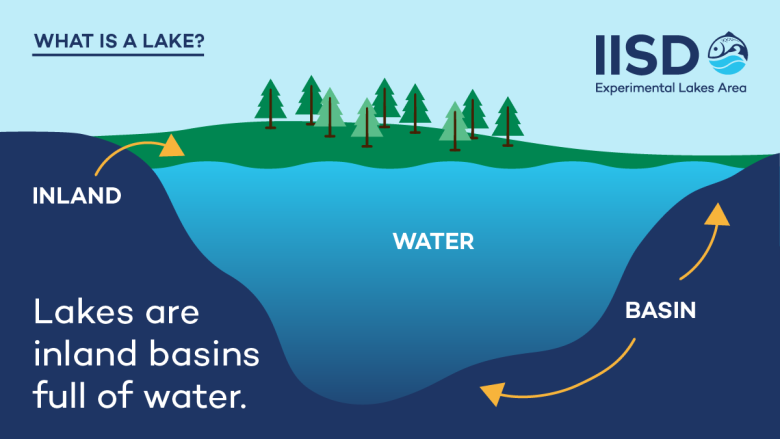
Size and surface area help most people identify lakes by sight. Most people I know recognize lakes as large waterbodies. One guideline used by Paul Fafard, one of IISD-ELA’s researchers, is that a lake should have a surface area greater than one hectare, meaning you can’t throw a rock across a lake’s widest point. (Feel free to check out his awesome explanation of why lakes stratify while you are here).
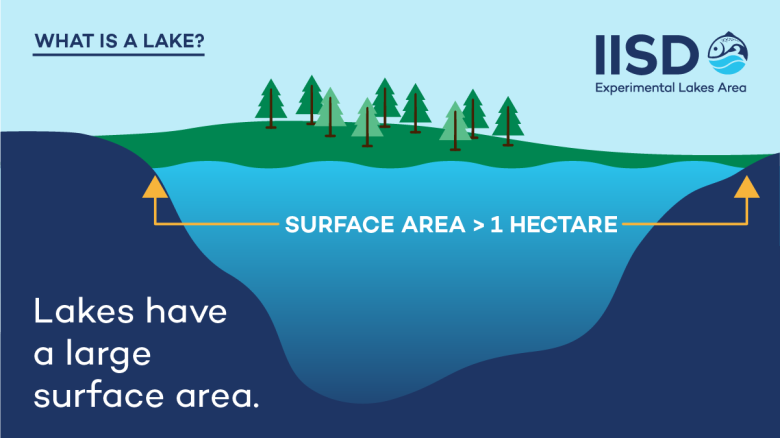
Defining a lake becomes more complex when you also consider the waterbody’s depth and bottom structure (i.e., bathymetry). A waterbody may have a large surface area, but if it’s shallow, is it really a lake?
Compare the famous Lake Baikal to IISD-ELA’s deepest Long-Term Ecological Research lake, Lake 239. Clocking in at a maximum depth of 1,642 metres, Lake Baikal is almost 53 times deeper than Lake 239. Despite this, both are regarded by limnologists and six-year-olds alike as the awe-inspiring (not to mention super cool) lakes that they are.
According to some limnologists, lakes range from shallow (sometimes less than 1 metre deep) to very deep. With this in mind, it is important to note that since lakes can range in depth, the dynamics of specific lakes will be influenced by their depth. Interestingly, identifying lakes by bathymetry depends on where you are in the world and the kinds of waterbodies common in that region.
When asking questions about the health of lakes and understanding ongoing lake research, context is always important to consider. Being aware of the context in which a lake is being discussed will help you identify how it’s being defined and what kind of lake it may be.
Probably the most consistent strategy for defining a lake involves water movement. This is easiest to understand when comparing a lake to a river. Lakes are lentic habitats (i.e., habitats with slow-moving water) while rivers are lotic (i.e., habitats with flowing water).
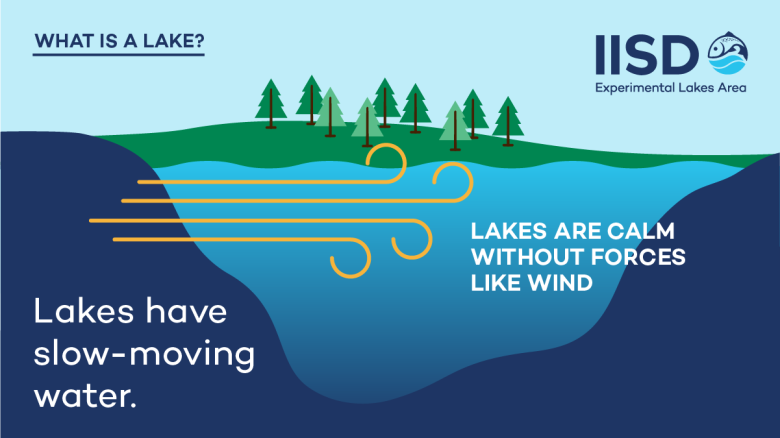
Try looking at a waterbody on a windless day – is the water still moving or is it calm? To the human eye, lakes will remain calm on a windless day, while a river or stream will continue to flow.
Why Is the Water That Colour? (or, Chemical Limnology)
Lakes are not necessarily differentiated from other waterbodies solely on the basis of chemistry. However, the proportions and movement of chemicals in a waterbody can help us describe how it fits into the landscape.
Lake chemistry relates to physical features, such as the lentic nature of lakes, lake basin geology, and how water flows through the lake. Closed lakes, for example, lose water via evaporation (compared to open lakes that have stream or river outlets). Closed lakes are usually saltier than open ones because evaporation leaves behind dissolved chemicals and nutrients.
Have you heard of the Dead Sea? This well-known lake is so salty that only highly specialized organisms can live in or near it and visiting swimmers can float on their backs and read without getting their book wet.
Lake chemistry differs depending on where it is in the world and the type of lake it is. Human actions, biological processes, and geological processes can change lake chemistry.
TL;DR? Not all lakes are fresh water!
Are There Fish in It? (or, Biological Limnology)
Lakes and other waterbodies are important and complex ecosystems. The biota living in a waterbody can hint at whether it’s a lake or not. As lakes are considered big bodies of water, it’s helpful to consider what and how larger species use the water.
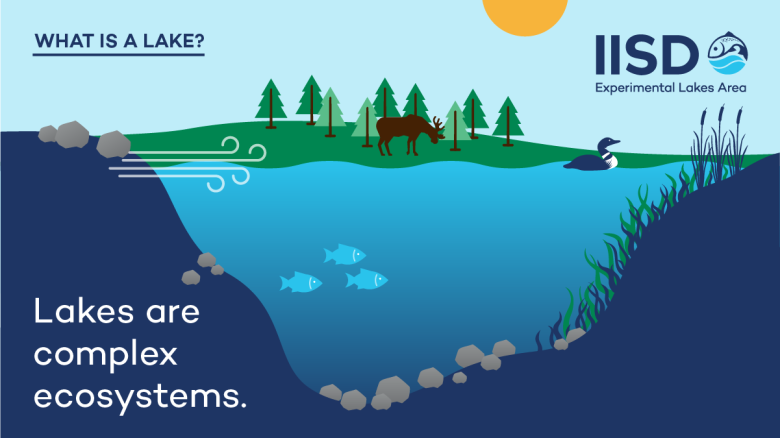
Lakes are often permanent habitats for fish because they can be big enough to retain good habitat throughout the year – sometimes even in -40°C temperatures. Around IISD Experimental Lakes Area, we have cold-loving fish that evolved in deep lake habitats (think lake trout). To those fish, a lake may be considered a suitable year-round home, while a wetland or pond that freezes solid might be a nice seasonal cottage.
But, as I’ve already mentioned, nothing is so simple. Not all lakes support the same animal communities, so there is no rule for what lives in lakes versus other waterbodies.
What Does This Waterbody Mean to Us? (or, Situated Limnological Knowledge)
Human cultures around the world recognize lakes as essential parts of their environments. Living in the lake-rich Canadian boreal ecozone, I see firsthand how people depend on lakes for navigation, recreation, education, survival, and wellness.
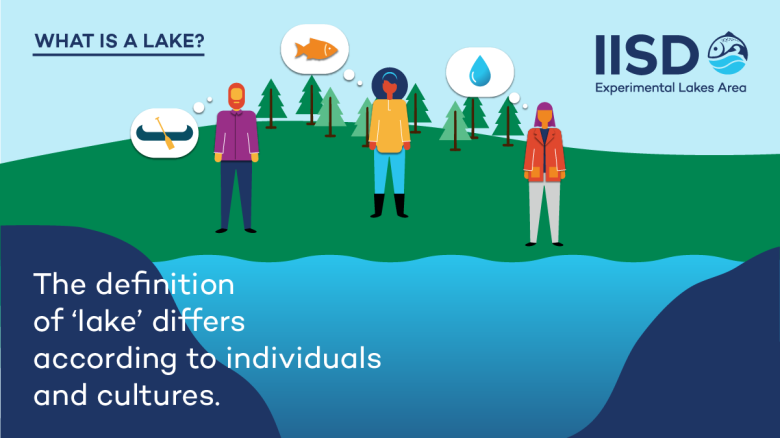
Thinking of my own experiences and reading about the experiences of others on lakes, I’ve realized that human actions, behaviours, and experiences associated with a waterbody are necessary for identifying if it’s a lake.
Lakes can be identified by their unique social and mystical relevance. For some Indigenous peoples, lakes have Mishibeshu, or Water Panthers, that influence the weather, safety, and sometimes prosperity of lakes for humans. In my readings, I’ve learned that Mishibeshu may shape each lake in a different way, which controls the unique characteristics of that lake.
It remains clear to me that people almost always identify lakes by the waterbody’s charisma and its role in the landscape. These ideas, along with physical, chemical, and biological characteristics, help us as people shape the idea of what a lake is to us.
In short, when differentiating a lake from other waterbodies, the things to remember are:
- Lakes are inland basins full of water
- Lakes are large in surface area
- Lakes have slow-moving water
- Lakes are complex ecosystems
- Lakes differ across cultures and geographies—there is no one single way to define a lake.
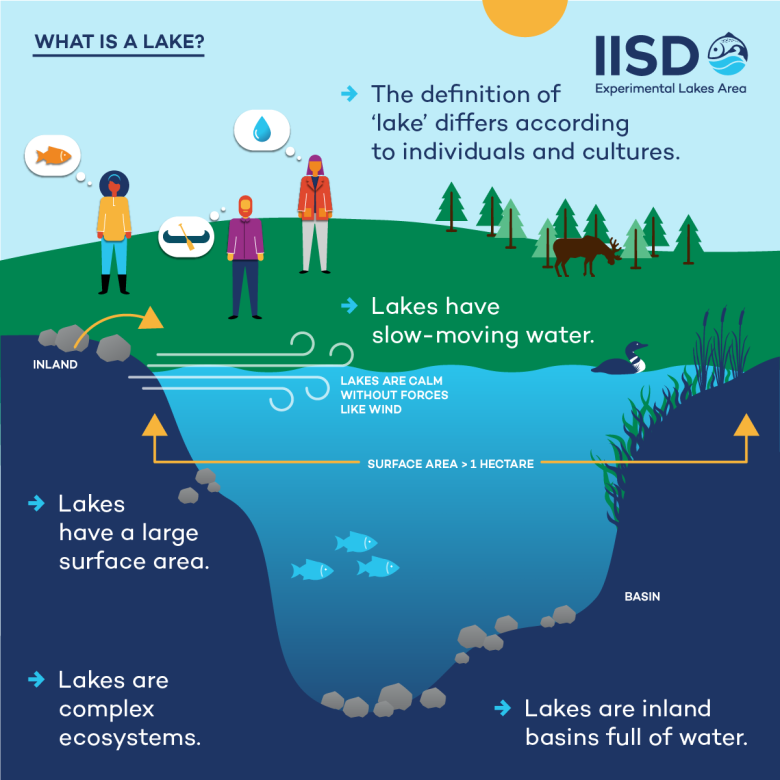
Want to get back to some more basics? Be sure to check out our blog posts What Is Fresh Water? and What Is a Limnologist?